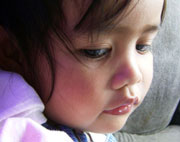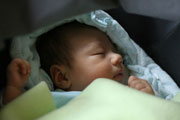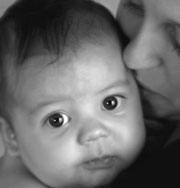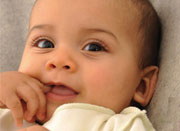
Babies have special affinity toward human voices. This is because they are used to hearing human voice from their time in the womb. They also may exhibit inclination toward voice of the mother because the baby spends maximum time with the mother before birth.

Newborns also have a remarkably efficient mechanism for defending themselves against over-stimulation. Something that causes a startle reaction, such as a bright flash of light in the eyes or a sudden bang, speeds up the baby's breathing and heart rate.

Unlike the infant's eye's which need a few months for full development, a newborn's hearing apparatus is fully developed at birth. In fact, there is ample evidence that before birth the baby is using her hearing and reacting to outside sounds; she may move actively during a concert, or startle in response to the bang of a door. After birth the sound she hears is more amplified of course, but the womb is not an altogether silent place; sounds from the mother's organs reach the baby.

A newborn's eyesight undergoes quite a few changes in the very first month. A baby is born with peripheral vision. By peripheral vision, we mean the capacity to see through the sides or edges and not straight. However, babies quickly also develop the capacity to focus at points and objects that are in center of their field of vision. They have a tendency to focus at objects that are between 8-15 inches in front of them. Their visual acuity grows quite fast and by the end of first month they can focus as far as 3 feet.

Until recently, infant's brain and behavior was described, in simple terms, as a bundle of reflexes, stemming only from the lower brain and spinal nerves; not until weeks later would the 'higher' cerebral cortex begin to function, making voluntary behavior possible and at the same time inhibiting many early reflexes. This served to explain some of the surprising abilities that are present at birth, only to fade away for a period before they return in 'true' form as self-directed actions.

For all their delicate appeal, newborn babies can hardly be called beauties. There is a rather gnomish look to them, with oversized head (one-fourth of their entire length), narrow chest, large round abdomen, and short-bowed legs. The baby's appearance when they arrive is wet and slippery coated with vernix caseosa the white creamy substance that protects the skin before birth.







